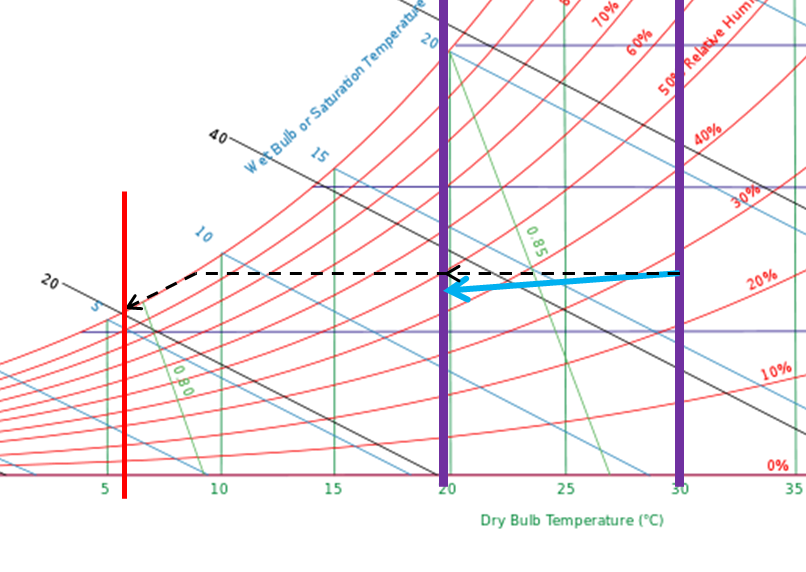User Tools
Site Tools
Site Tools
Table of Contents
IT room management
Floor tiles
Tiles come curved, and when in place gradually become flatter. This provides stability to the floor. This is why you should be careful when removing tiles.
Mass is applying as following :
If you want to remove another tile, you should not remove a tile in the same column or in the same line, as it may cause tiles movements and permanent disharmony :
Air temperature and humidity
Game here is to avoid energy losses. You need one chart to understand the devastating effect of latent heat, and another one to avoid it.
First have a look on vaporization chart: https://www.sphenisc.com/doku.php/datacenter/cooling/basis#psychometric_and_vaporization_charts. Energy stored in water is on x axis, and temperature is on y axis. On A, we increase temperature of water up to 100°c (assuming pressure is 1 atm). Energy used is nearly proportional to the temperature. From 20°c to 100°c, h increases from 100 J.kg-1 to 400 J.kg-1. On B, water is vaporized, at fixed temperature (100°c) and to fully vaporize uses a LOT of energy, h increases from 400 J.kg-1 to 2650 J.kg-1. Then on B, vapor temperature still increase as we add energy, nearly the same way than for A.
What is important here is: energy consumed to vaporize water and to condense water is enormous. This is called latent heat.
The issue in many IT room is the following: to keep ambient humidity and temperature to a desired state, some datacenters are wasting a lot of energy by vaporizing water and condensing water all the time. This is a realm waste as IT equipment just heat up air, and do not take advantage of latent heat.
Let's take an example: I want my room to be at 20°c, and humidity to be 50%. We will assume that air is increased by 10°c inside IT servers. Also, we will assume that my cold water in air handling units is 6°c. Using the psychometric chart https://www.sphenisc.com/doku.php/datacenter/cooling/basis#psychometric_and_vaporization_charts, it is possible to see that heat in IT equipment increase air temperature (read arrow). Then, in theory, it should decrease inside air handling units:
However, in reality, this will become this:
And you will need to waste energy to vaporize water to increase humidity to 50%. Why ? Because you need to visualize what appends inside air handling units. Air is going through heat exchanger with cold water. Locally, part of the air is in contact with very cold metal at 6°c, and another part is not. The first part will be cooled near 6°c, and this will leads to the dew points, i.e. condensing water. All the energy used here to condense water will be wasted as it is not used to reduce air temperature but only to condense water.
Increasing cold water temperature to 10°c would avoid this.




